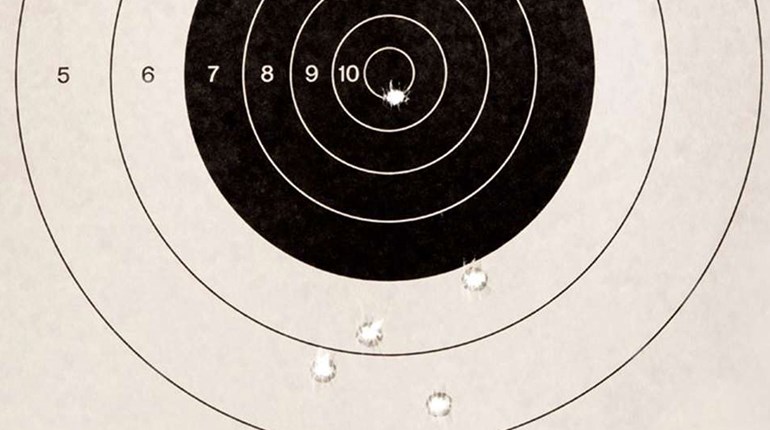
The Problem:
You are a self-described mediocre to so-so shooter when measured against the qualities and capabilities of the current group with whom you shoot. You know you have a lot of bad habits, but don’t know how to break them and create new ones more suitable to shooting accurately. Your desire is to elevate your shooting to the level of your friends (or better). Is there a way to make some meaningful changes to improve your shooting habits, or should you just take up golf?
The Solution:
In the case of shooting (and golf for that matter) many bad habits are created by a long-standing pattern of learned behaviors stemming from incorrect or inadequate training at the very foundational levels of exposure. Like any other skill built on faulty information, it is difficult to achieve any degree of success by reinforcing previously learned techniques and actions that don’t yield the desired results. In fact, repetition of inadequate or incorrect material quite often makes eliminating an undesirable habit and replacing it with a better one more difficult.
The key to forming good habits in the first place is to learn and practice proven techniques. These can be included with approaches that have worked for you previously in achieving expected results.
This information or action, as it is presented, should be easy to understand, make sense and be relatively easy to reproduce. An understanding of what the objective is, how to achieve that objective in its simplest form, as well as why the information or technique works to your benefit can be applied to validate most learning points. Through repetition with attention to detail and precision, these learning points become committed to subconscious action. Therefore, it becomes an automatic reaction to a specific situation—without the need for conscious thought or habit. A competent coach or shooting instructor can streamline this process exponentially.
Unseating a bad habit is often challenging, but it can be done with a little knowledge and effort. (Again, a good coach or trainer can be beneficial in helping this endeavor.)
It helps to understand the origin of the bad habit in order to unseat the tainted information or action from the general repertoire of thought processes. Sometimes we are given bad information by—or misinterpret correct information from—a trusted and respected source. This tends to lock the error in deeper because of the emotional connection with the source. There often is a tendency to cling to the flawed thinking even though the facts show otherwise when emotions are involved. Often pure logic, reason or plain, old irrefutable facts are necessary to help us see the error in our ways past the emotional attachment. These points help to unseat the flawed information from our mental reference library, what was thought to be true, but actually wasn’t. In some of the more deeply seated undesirable habits, physical action may be necessary to effect a beneficial change.
I also unknowingly developed a bad habit that became so deeply ingrained I could not stop it, even though I knew intellectually it was detrimental to my shooting successes. The problem was letting my eye (focus) transition from the front sight forward toward the target as the trigger was being moved rearward. This condition resulted in diminished accuracy and poor follow-through.
The good news is this problem forced me to find an answer to this problem, which I did, and that evolved to what is known now as the Wall Drill. Triggering the gun with acute focus on the front sight while the muzzle was a fraction of an inch off the plain, vertical surface of a wall ensured there was no possibility of the eye moving forward of the front sight as the trigger was pulled through the point of release. Practicing this dry conditioned my hand and eye to work together when firing live ammunition. The result was forming a new habit that improved my practical marksmanship and follow-through.
Habits can be formed in many ways. Often simple repetition (such as how you brush your teeth or comb your hair) are classic examples. Knowing the purpose and benefit of the thought or action, why it is important to meet a specific goal, will speed up the process of execution without the need for conscious thought.
The first step to improved shooting is to identify the habit—or habits—that need changing, giving each a priority. Changing those habits can be made easier by understanding how they became habits initially, why they need to change and how to best affect that change. Keep it simple. Work on one at a time with the aid of a coach, if necessary, until the desired performance is achieved.
Visualization of the desired performance in detail aids in maintaining and reinforcing the brain’s training to respond automatically to a given set of circumstances.
Mental practice of each step necessary for a successful shot release alone is effective in forming a solid plan to follow when firing live ammunition on the range. Doing this creates a habit—when followed uninterrupted—thereby maximizing shooting performance.
Knowing what works, how it works and why it works makes it easier to convert bad habits into good ones, which inevitably leads to better results overall.



































